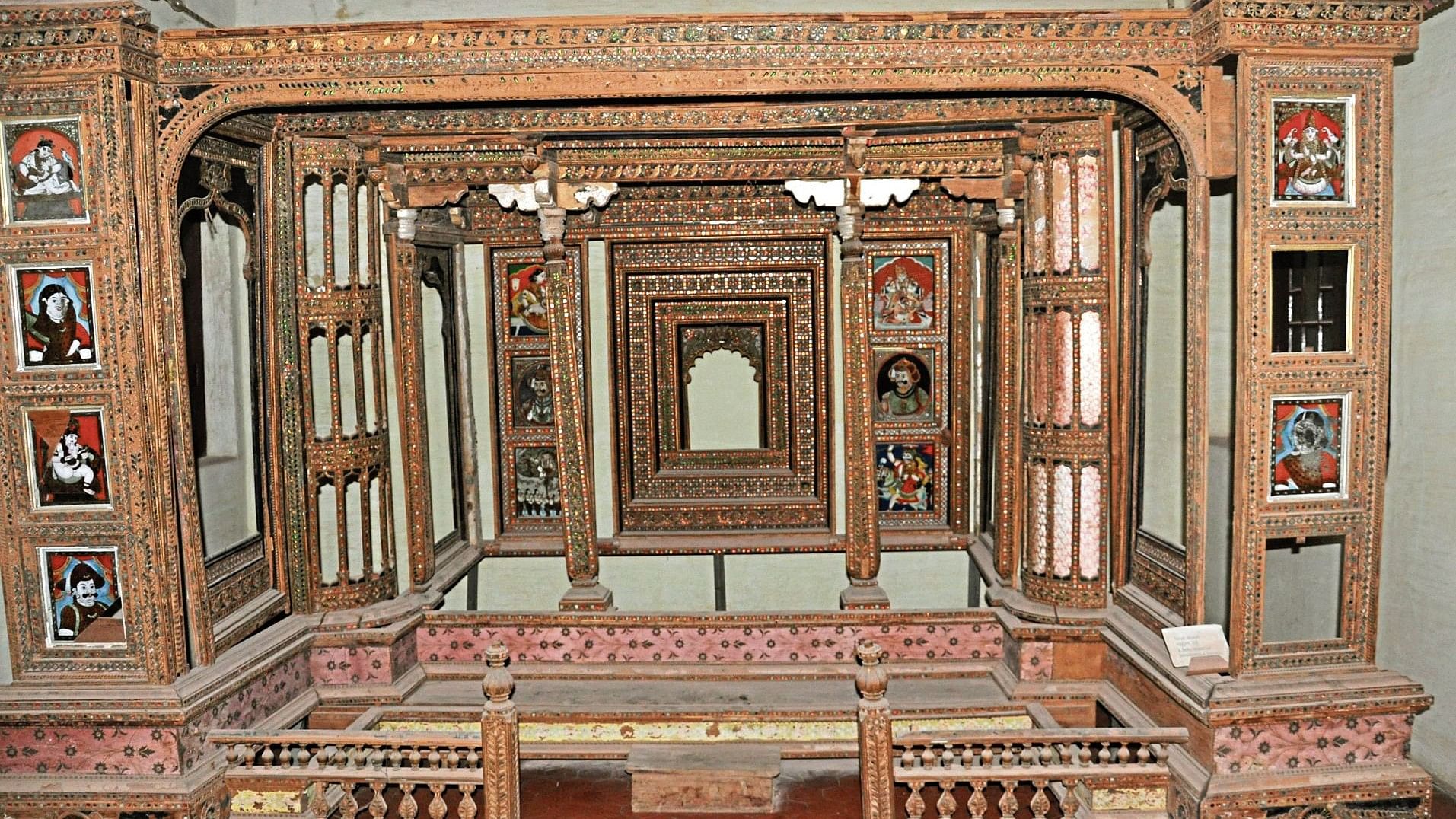
The preserved treasure of the Jayalakshmi Vilas Mansion in Mysuru is now on display at its Folklore Museum.
Credit: DH Photo
Today we commemorate World Heritage Day – an international day to recognise the monuments and sites that encapsulate the depths and diversity of our histories. In celebrating our heritages, we reach beyond appreciating individual structures and artefacts to see the stories, cultural legacies, and relationships that they represent – and to celebrate the things that make us most human. Of all the areas in which the United States and India work together as partners, perhaps none are as unique – or as vibrant – as our joint efforts to safeguard the jewels of our heritage.
For more than two decades, the United States has worked to preserve cultural treasures around the world through an iconic programme: the Ambassadors Fund for Cultural Preservation (AFCP). In India, the United States has dedicated more than $2.5 million to help preserve many significant architectural landmarks, including the Sunderwala Burj, Batashewala Mughal Tomb Complex, and the Arab Serai Complex Gateway within the UNESCO World Heritage site, Humayun’s Tomb in
New Delhi.
Beyond architecture, we’ve deployed this fund in partnership with India to protect more transient cultural treasures: from the endangered folk music of the Langa and Manganiyar communities of western Rajasthan to the delicate palm leaf manuscripts and rare books housed at the United Theological College in Bengaluru. These efforts bridge the divide between yesterday and tomorrow, enabling future generations to draw inspiration from the genius of generations past.
Take, for instance, a US partnership with the University of Mysore and Deccan Heritage Foundation, which provided a $300,000 lifeline to preserve the treasures of the Jayalakshmi Vilas Mansion in Mysuru, Karnataka. The treasures preserved and now presented for display at the Mansion’s Folklore Museum – musical instruments, dancers’ costumes, and puppets of mythological figures – transcend the simple cloth, wood, and metal from which they are made. They open a window to the past and grant us a glimpse into the lives of their users; costumes open a window to ages past. The insights they provide on our identity and place in the world are priceless.
The key ingredient for each of these programmes is partnership. For each project, the United States works closely with experts who live and breathe this heritage, and in turn bring it to life for all of us – from conservation professionals to master artisans, from educators to community leaders. Successful AFCP projects are built not from bricks and mortar, but from the passion, dedication, and love which each partner brings to the mix.
These projects inspire visitors, create employment for local artisans, and empower communities to take ownership of their shared story. The reinstated Jayalakshmi Vilas Mansion will become a centre of learning in Mysuru, drawing in new tourists and bringing economic benefits to the whole area. The cultural partnership between the United States and India works because it focuses on the people at the heart of the story, celebrating the beauty and diversity of their experiences. In a world so often divided by difference, these programmes showcase the shared humanity that brings us all together.
The United States and India will continue forward on this journey of preservation and celebration, forging new partnerships to safeguard the most precious parts of our heritage. We will remain ever mindful of the human stories behind every monument and artefact, and of the traditions that give them coherence. On this World Heritage Day, we will reconfirm our resolve to defend the full tapestry of human heritage in all its multicoloured splendour, working strand by strand and thread by thread.
In doing this, we will ensure that our heritage is not simply a relic of the past, but a key to a brighter future.
(The writer is US Consul General, Chennai)